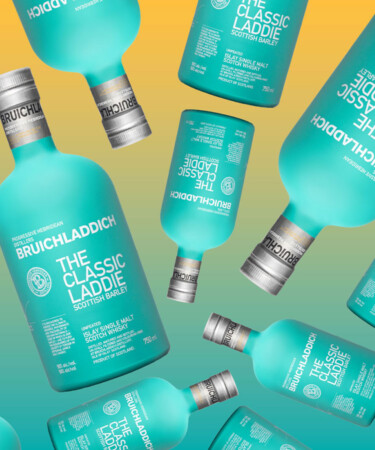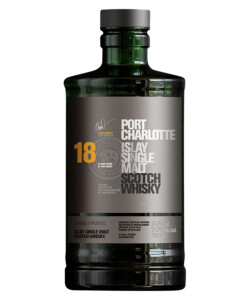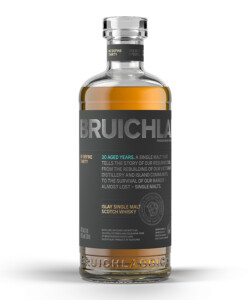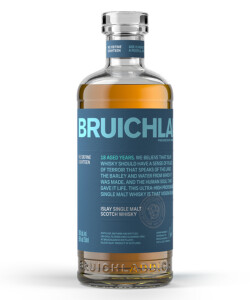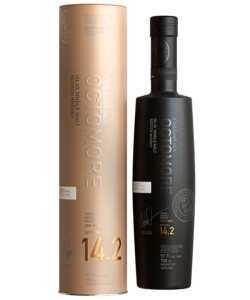If you’re looking for a distillery that captures the essence of Scotch whisky, Bruichladdich is a fine place to start. When people think of Scotch, they tend to think of its distinct peat character, and Bruichladdich known for its embrace of those intense, smoky flavors in some of its products like the renowned Octomore Series. Founded in 1881, the distillery is one of the most historic on the Scottish island of Islay, making it a top destination in the renowned whisky region.
And though Bruichladdich has an extensive history, the distillery is actually one of the most innovative in the region in both its products and sustainability efforts. Bruichladdich was the first Scotch distillery to earn B Corp certification and is a vital part of the Islay community, providing great support for both its employees and local farmers. There’s a lot to unpack when it comes to Bruichladdich’s history and its goals for the future. So, if you’re a true Scotch whisky lover, it’s time to get to know this iconic distillery.
Here are 10 things you need to know about Bruichladdich.
-
Bruichladdich was originally founded by three brothers — and was almost derailed by family drama.
The Bruichladdich distillery was built 142 years ago by William, John, and Robert Harvey. At the time, the brothers already owned two distilleries and sought to add a third so that they could effectively control the whisky industry. So, they pooled their money to build a large, industrial-scale distillery on the remote island of Islay with hopes they could combine the production from their three distilleries to make a successful blending and bottling business. But a falling out between the brothers threw a wrench in the plan and left Robert and William to run the distillery on their own as an isolated project. The distillery struggled to be profitable and stopped production in 1907. It wasn’t until Bruichladdich was purchased by Scotch whisky blending company Robertson & Baxter in 1913 that it resumed selling whisky, and in 1919, the distillery finally started production again.
-
The distillery has the second-tallest stills in Scotland.
When the grandiose Victorian-style distillery was first built, the three brothers wanted to make it the largest of their holdings. The state-of-the-art building incorporated many innovative design features and was the largest distillery on Islay at the time. The building needed to be massive in order to fit the six-meter-tall copper stills, which are today the second-tallest stills in Scotland.
-
The historic property was completely revamped in 2001.
The Bruichladdich company has changed hands several times over its centuries of distilling, but its most notable acquisition was when wine merchants Mark Reynier and Simon Coughlin purchased the estate in 2001. The distillery had been mothballed in 1994, so when the wine pros took over the property, it was a total overhaul. The distillery was completely updated, while still keeping some of the same Victorian-age equipment to honor its history. When Bruichladdich started up production again, Reynier and Coughlin implemented a new vision: to produce single malt whisky that was reflective of the terroir of Islay.
-
Bruichladdich was essential to reigniting Islay’s barley business.
Barley is the main ingredient in single malt Scotch whisky, but there is no law stating that the crops must be grown and harvested in Scotland. But Bruichladdich has always made a point of sourcing Scottish barely to support the country’s small farmers. Barley stopped growing on Islay in the mid-20th century, but Bruichladdich worked to revive the island’s barley production by supporting local farmers. Now, 20 farmers on the island specifically grow barley for the company and over half of Bruichladdich’s barley is sourced locally.
-
Bruichladdich wants to prove that whisky can show terroir.
The concept of terroir and the unique characteristics it can impart are commonly associated with the wine world, so it only makes sense that the distillery’s new wine-focused owners place extra emphasis on the environment’s effects on the whisky. Bruichladdich’s philosophy is that the land has a profound effect on the drinking experience, so the distillery now traces each parcel of barley that it uses, keeping track of different varieties and farms.
Recently, the distillery has been experimenting with distilling identical varieties of barley that are each grown in separate regions of mainland Scotland — Aberdeen, the Black Isle, and the Lothian — to see the impact of where the barley is grown on the final product. Bruichladdich is now working to create products that can show the subtle differences between these Scottish terroirs. In addition to barley, the idea of peat conveying a sense of place in whisky is taking off globally.
-
Bruichladdich’s Octomore Series is notoriously peat-forward.
The distillery makes three primary Scotch whisky products: the unpeated Bruichladdich, the heavily peated Port Charlotte, and the super-heavily peated Octomore. According to the brand, the Octomore series has been dubbed the world’s most heavily peated whisky series since it launched in 2008. Even though the whisky exhibits intense peat character, it also showcases a resounding elegance, and this balance has prompted the brand to call it “the impossible equation.” The most recent release of Octomore includes three peaty expressions titled 14.1, 14.2, and 14.3, each aged in different casks and bottled at a various proof levels. The sought-after trio of smoldering, smoky Scotch whiskies is released annually.
-
The Classic Laddie is actually made without peat.
Though Bruichladdich’s most renowned bottlings are heavily peated, the company makes a spirit called Classic Laddie that’s made without peat and instead incorporates raw barley. This unique practice allows the Scotch to undergo a slow fermentation in wooden washbacks that evokes a cereal-forward flavor profile with notes of warm citrus, ripe peach, popcorn, and brown sugar.
-
The distillery doesn’t only make whisky.
The Bruichladdich distillery is also the home of The Botanist, a Islay dry gin that was first released in 2011. In line with the company’s commitment to terroir, harvesting natural botanicals that go into the gin from Islay showcases the island’s rich character. The Botanist was created by renowned Bruichladdich distiller Jim McEwan, but the brand called on two local botanical experts — Dr. Richard Gulliver and Mavis Gulliver — to help guide the team in identifying over 30 aromatic herbs, leaves, and edible flowers that could be sustainably foraged for the gin. The Botanist contains 22 wild Islay botanicals including elderflower, spearmint, wood sage, chamomile, wild thyme, and, of course, juniper.
-
Bruichladdich is the largest private employer on the island of Islay.
Bruichladdich is now the second smallest distillery on the island in terms of production, but it’s actually the largest private employer on Islay aside from the local government. Of the 200 people who work across the island’s nine distilleries, half of them work at Bruichladdich.
-
Bruichladdich recently redesigned its signature bottles with sustainability in mind.
As a distillery that’s hyper-focused on terroir, it only makes sense that sustainability is a top priority. The property is always innovating to try to reduce its carbon footprint, including practices like using composting facilities and a hot wastewater system. Earlier this year, Bruichladdich redesigned the Classic Laddie bottle to be 32 percent lighter, reducing packaging emissions by 65 percent.
